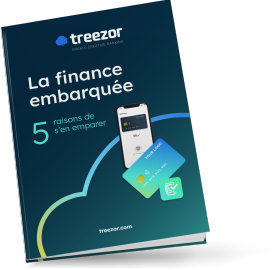Reason #1 : Enhance the customer experience
Become more efficient by providing end customers with financial services via a BaaS platform, thanks to intuitive, seamless apps which they are now accustomed to using on a day-to-day basis. This is how a company like Uber, for instance, has managed to offer a seamless payment journey which is fully transparent for users. The integration of seamless payment systems in customer journeys has an immediate effect on user loyalty: effortless payment increases the purchase conversion rate. Uber’s app might be one of the first in the world to have used embedded finance modules, but nowadays the vast majority of apps feature a payment component.
Every newcomer on the tech market can henceforth increase their value proposition by embedding finance into their customer journey. One such example is Leeto, a platform providing solutions for employee representative bodies. “Although the payment part isn’t the core feature of our offering, it is a key aspect of our value proposition. In this way we can set ourselves apart with very strong added value,” Arthur Reboul, CEO of Leeto, explains. He adds: “We have noticed tremendous interest in our solution since we introduced the payment account. In three months, we have registered twice as many new customers as during our first two years! The payment account really does make life easier for employee representative bodies.”
Stronger customer loyalty has also been observed at Skipr, the corporate mobility solution. This equips the employees of its corporate customers with payment cards for settling all mobility expenses. Three years after founding Skipr, “the payment card has become a cornerstone of our offering,” Arnaud Biebuyck, CFO of Skipr, tells us, pointing out that: “Right from the launch, we needed robust and flexible technology that could easily fit into our customer journey.” The BaaS solution has thus enabled Skipr to quickly build payments into its service range.

